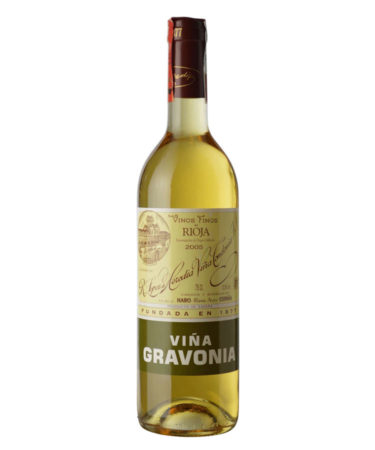Chart after chart outlines the optimal age window for top wine regions, and articles debate the best bottles and methods for cellaring. But who has the time, space, or money (not to mention willpower) to buy cases of young wine and age them until a certain prime drinking point in the distant future? Although some retailers and auction houses specialize in sourcing and selling aged wine, these bottles are often prohibitively expensive, leaving the majority of us to be content with drinking youthful wine.
That’s why it’s a real treat when a top winery believes in doing the hard work for us and releasing its aged wines only when ready to drink. It’s a downright miracle when those wines actually sell for an affordable price. Get out a pen and a piece of paper, because you’ll want to remember this bottle: the R. López de Heredia “Viña Gravonia” Rioja Crianza Blanco 2005 is the best deal for aged white wine you’ll find.
Not every wine is meant for aging. In fact, most wines are best consumed upon release, when there is an emphasis on fresh fruit and bright acidity. This is especially true for white wine, which doesn’t often have the structural backbone necessary for aging. White Rioja is an exception to that standard, traditionally made from the Viura (a.k.a. Macabeo) grape, which can gain remarkable complexity with age. While plenty of white Rioja is consumed young, it makes sense that this region has a custom of aging its white wines; after all, Rioja is famous for its aging requirements, which are typically indicated on a wine’s label.
But R. López de Heredia takes aging even further than the required standards. White Rioja labeled “crianza” must be aged for a minimum of two years. The “Viña Gravonia” Rioja Crianza Blanco is aged for a whopping 10 years before release, four of which are spent in oak crafted by the winery’s in-house cooperage. Right away, the effect of aging is noticeable by the wine’s deep golden hue. The aromas are intoxicating, with notes of bruised yellow apple, ripe citrus, honey, and salted nuts. Full and enveloping in the mouth, the wine also has distinct acidity, adding texture and dimension and leaving the palate refreshed.
While this is a phenomenal food-pairing wine, begging for a Spanish trifecta of salty cheese, olives, and jamon, it’s also one that deserves some contemplation, if only to see how it changes as it sits in the glass. Don’t worry about keeping the bottle out of the fridge while you inevitably sip multiple glasses; its character will only grow stronger as it warms up a bit. Cradling a generous pour on the couch may feel incredibly hedonistic, but just lean into the urge; it’s exactly what we did.

